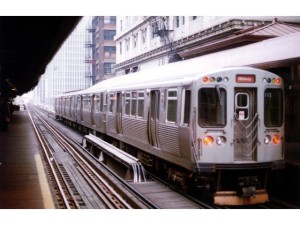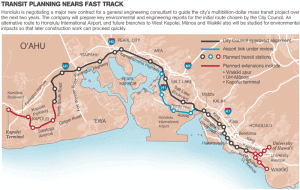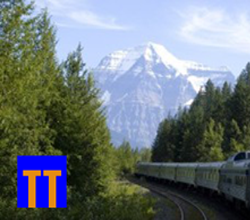The Cattle Car Makes a Comeback
Do we really need any further evidence that high gasoline prices are causing more and more people to switch to public transit?
The Chicago Transit Authority has recently announced that all seats will be removed from some of the cars used on their commuter trains during rush hour. As many as 50 additional passengers can be crammed into each of the seatless cars.
 Typically, in an eight-car train, two cars will be of the standing-room-only version, meaning that an extra 100 people can be accommodated on every train … although “accommodated” really doesn’t seem like the right word here.
Typically, in an eight-car train, two cars will be of the standing-room-only version, meaning that an extra 100 people can be accommodated on every train … although “accommodated” really doesn’t seem like the right word here.
Reaction from Chicago commuters has apparently been very negative but, according to CTA authorities, the alternative is that those 100 people would have to be left behind on the platform.
 Meanwhile, back here in Hawaii, opponents of Honolulu’s proposed transit system have apparently been successful in getting a build-or-don’t-build question on the November ballot. There are signs of hope that clear-thinking will eventually prevail: A recent poll indicates that some 60% of Oahu residents are in favor of the project.
Meanwhile, back here in Hawaii, opponents of Honolulu’s proposed transit system have apparently been successful in getting a build-or-don’t-build question on the November ballot. There are signs of hope that clear-thinking will eventually prevail: A recent poll indicates that some 60% of Oahu residents are in favor of the project.




This comment has been removed by the author.
This is crazy!
Toronto is going through the exact same thing. But their 8-point plan is to:
1. Expand platforms to take 12-car trains. They brag that GO will have the longest commuter rail trains in North America.
2. Buy more powerful locomotives to pull the 12-car trains at 150 km/hr. The first of the new locomotives was delivered last January.
3. Lay more track dedicated only to passenger trains. No freight trains means more passenger trains, faster trains and no delays due to freight.
4. Tear down part of the Gardiner Expressway, thereby getting cars out of the city by giving them nowhere to drive.
5. Open new commuter rail routes.
6. Open new stations on existing routes.
7. Expand the main downtown station (Union Station) whilst retaining its existing railway heritage components.
8. Improve connections with subway, streetcar and other local transit systems.
Complete details at:
http://www.gotransit.com/PUBLIC/en/news/goexpansion.htm
My personal experience is that GO has been very successful so far. Even during the peak of rush hour there are very few people standing; almost everyone has a seat.
Dunno. But I would guess they’re limited to eight-car trains because of platform length. And, in terms of available equipment, I suspect they’re operating at or close to capacity during rush hour. Some cars are always out of service for maintenance, etc. Of course, Amtrak has the same problem, ie: more passengers than equipment can handle on some routes. The problem is, they have literally hundreds of cars out of service but no money to perform the routine maintenance to get them back into service. One more result of the starve-Amtrak policies of the past 20-plus years. Stupid, eh?
Well, it sounds stinky for want of a more elegant description. But, as you point out, it also highlights the need for more rail service! I wonder if the locomotives have the capacity to pull more cars – seems like it would be simpler in terms of scheduling the rails to have one train of fifteen cars that three trains of five.